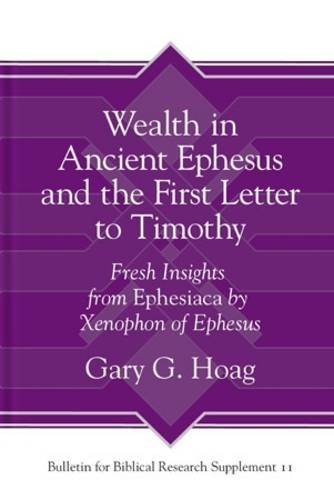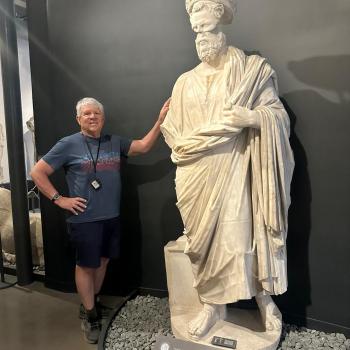Q5.BEN: I found your analysis of 1 Tim. 2.8-15 fascinating, and you may well be right that some high status Gentile women in the church were expecting, right off the bat, to be able to play the same roles in the church they had played, or knew were played by women, in the cult of Artemis. The critique of their apparel may well suggest that they were imitating the clothing protocols of women in the cult of Artemis, right down to the bling and hairstyle. Here, I think you have some reason to say that the instructions in 1 Tim. 2 would appear counter-intuitive and counter-cultural in some ways to these more elite women. Particularly fascinating was your comparison of the mythology behind the cult of Artemis, and the discussion of Adam and Eve at the end of the passage in 1 Tim. 2.8-15. Obviously, the monotheism itself of early Christianity made it religiously counter-cultural, and equally obviously new converts like these women were only partially socialized into the new religion, and may well have brought the old customs and expectations with them into it. Unpack for my readers some of the factors you see at play that convinced you, that you were on the right track in comparing and contrasting what is said in that text, and what you discovered in Xenophon and related ancient texts.
A5.GARY: I am glad you found the analysis fascinating. Don’t miss the significance of the primary evidence, however. I am not merely saying high status Gentile women were in view in 1 Tim 2:8-15. I brought forth evidence from Ephesiaca and other sources (religious rules mapped out in IvE 27, purity rites in Achilles Tatius, Leucippe and Clitophon, etc.) that shows that the rich Ephesian women modeled the way for all Ephesian women to plait their hair like the goddess, to dress to imitate the goddess, and to promote the myth that she was the author of all life, that sin came into the world through man, and to do this, or else. Or else what? Or else face the vengeance of the goddess of childbearing.
Again, I think a major problem that independent-thinking modern readers have in grasping life and society in Ephesus of the first century was that service to the goddess Artemis was not optional. Compliance with cultic ritual was enforced as law. But don’t take my word for it. This was an Artemis-centric pagan place. I would urge your students at the very least to read St. Paul’s Ephesus by Jerome Murphy O’Connor to get English access to primary literary source evidence with Ephesian provenance (then move to the Greek editions in the LCL or TLG), The Sacred Identity of Ephesos by Guy Rogers to explore how foundational the Artemis was for the identity of city, and Die Inshriften von Ephesos to get to know more about life and society linked to laws, decrees, and benefaction inscriptions in the epigraphic record.
If you want to see the connections between Artemis, Isis, and Diana, check out three more great resources: An Examination of the Isis Cult with Preliminary Exploration into NT Studies by Elizabeth McCabe, Isis in the Ancient World by R.E. Witt, and I Suffer not a Woman by Kroeger and Kroeger. For Ephesians, work, worship and all of life was linked to polytheistic thinking where behavior linked to social and religious expectations guided all of life before the gods. All the author of 1 Tim is doing, in this sense is de-mythologizing life for them.
What convinced me was the function of terms and themes. Scholars debated widely on the meaning of rare language in texts like 1 Tim 2. After reading ancient sources widely, the prohibited hairstyle and dress and the promotion of the Artemis myth appear connected not to a few high class women, but to high class women showing the way for expected participation of all Ephesian women. Men and women worked to preserve the sacred reputation of Ephesus where Artemis reigned supreme, and prominent citizens who could trace their lineage to the foundation of the city were privileged to lead the way. When I discovered that this myth was linked to a false view of the origin of man and sin, it became clear, again, that this text was pointing the the cultural and religious values imprinted on the minds and hearts of Ephesian women.
Alongside texts such as Acts 19, it became clear that a very large number of Ephesians who came to faith did so from service to Artemis and while they abandoned their idols of the goddess and magic books which can also be linked to the goddess, they undoubtedly had been acculturated into cultic thinking which would need to change as part of God’s Church.













